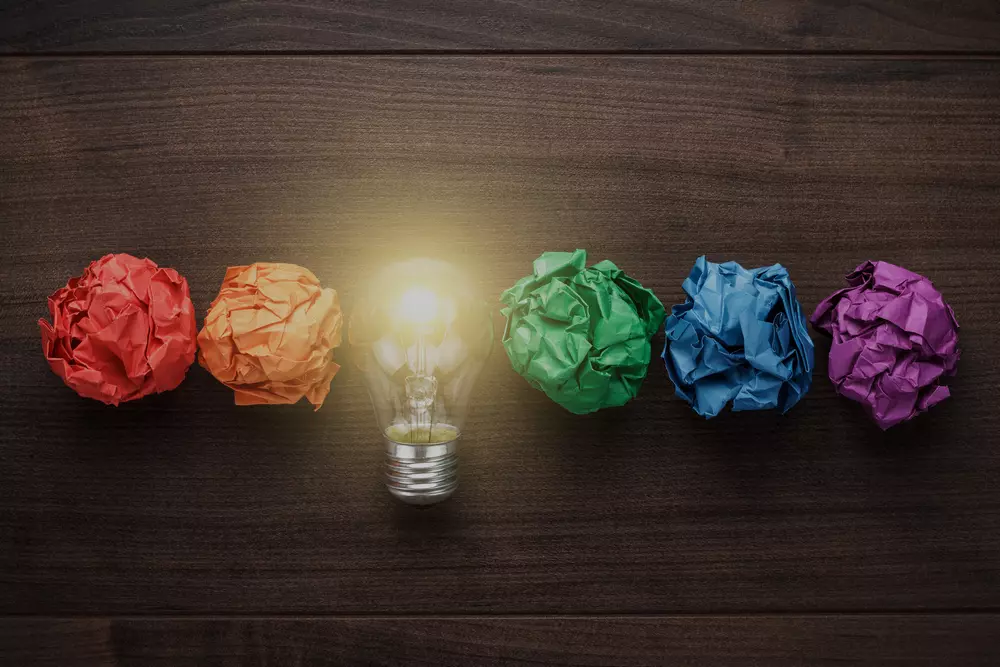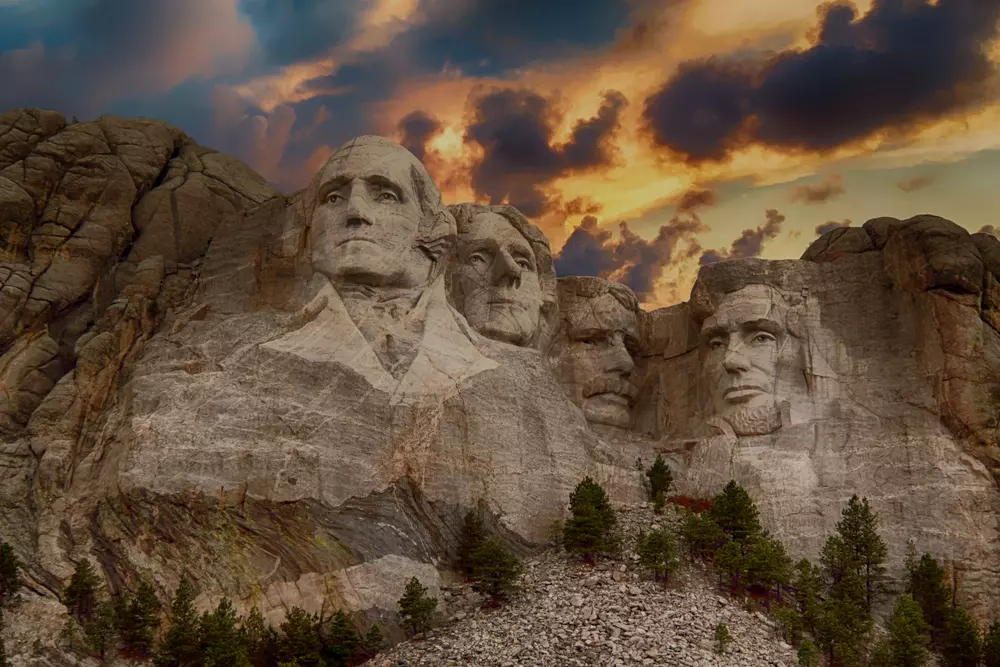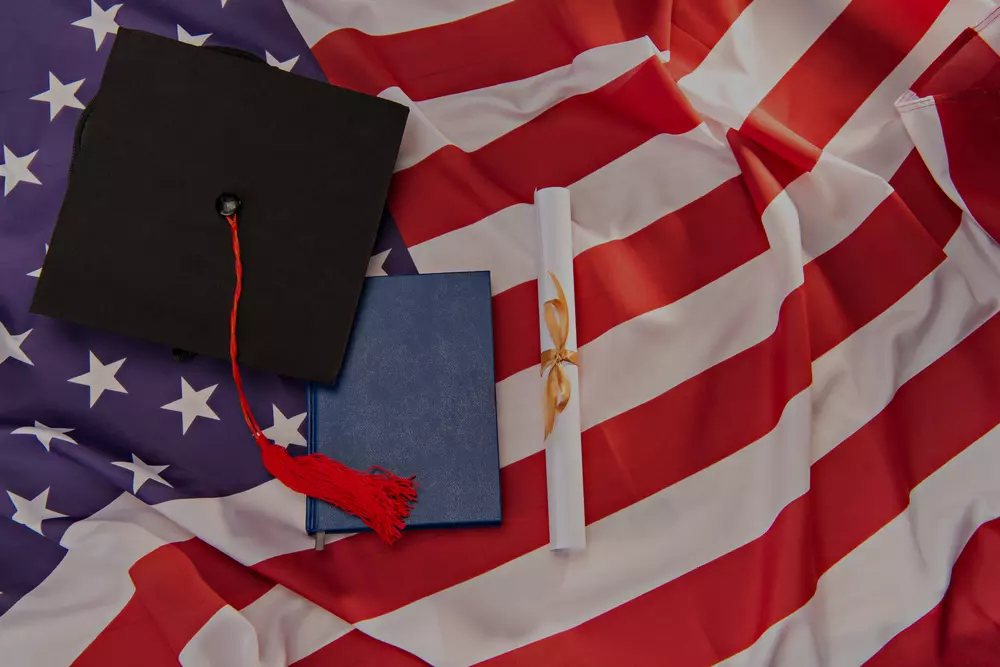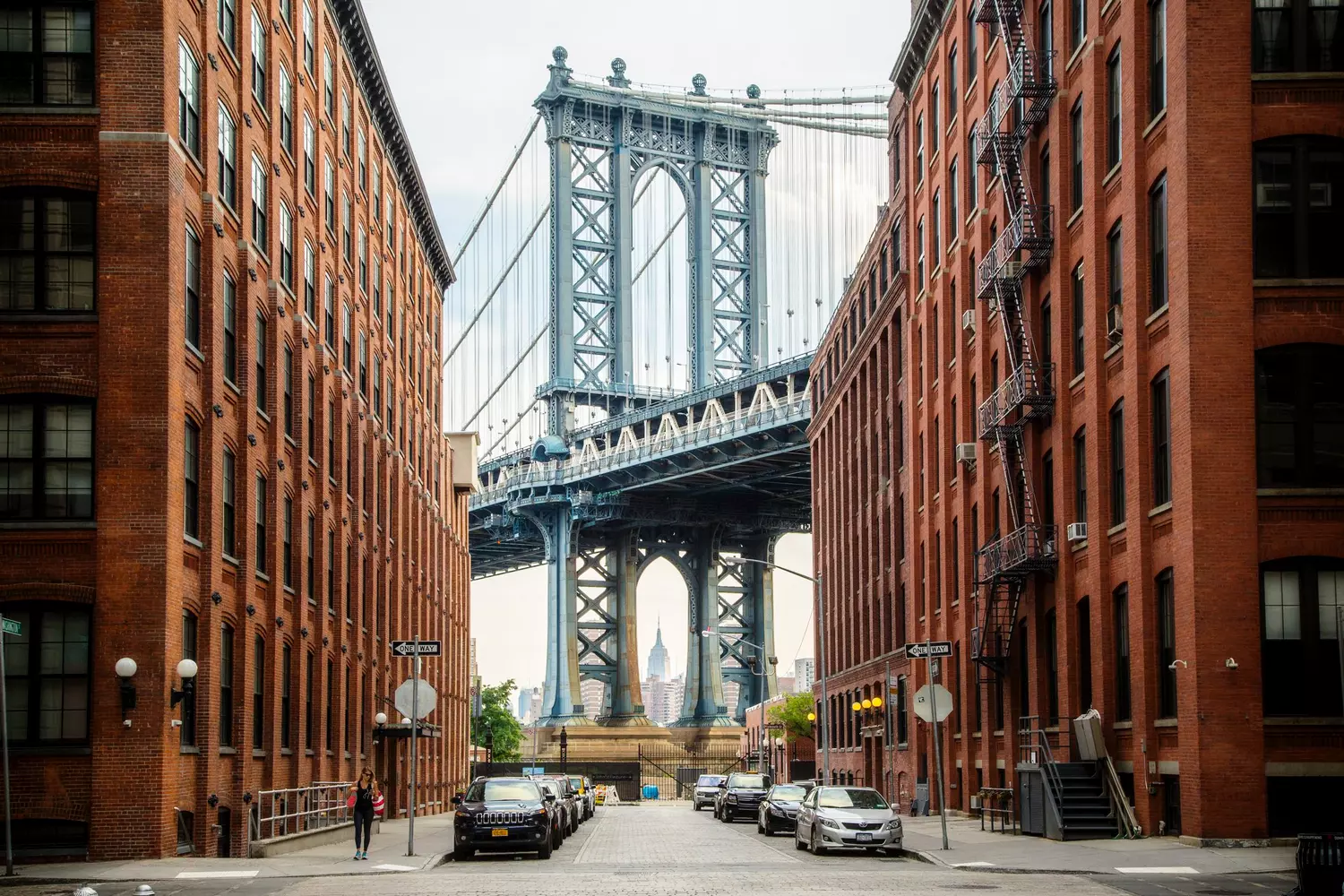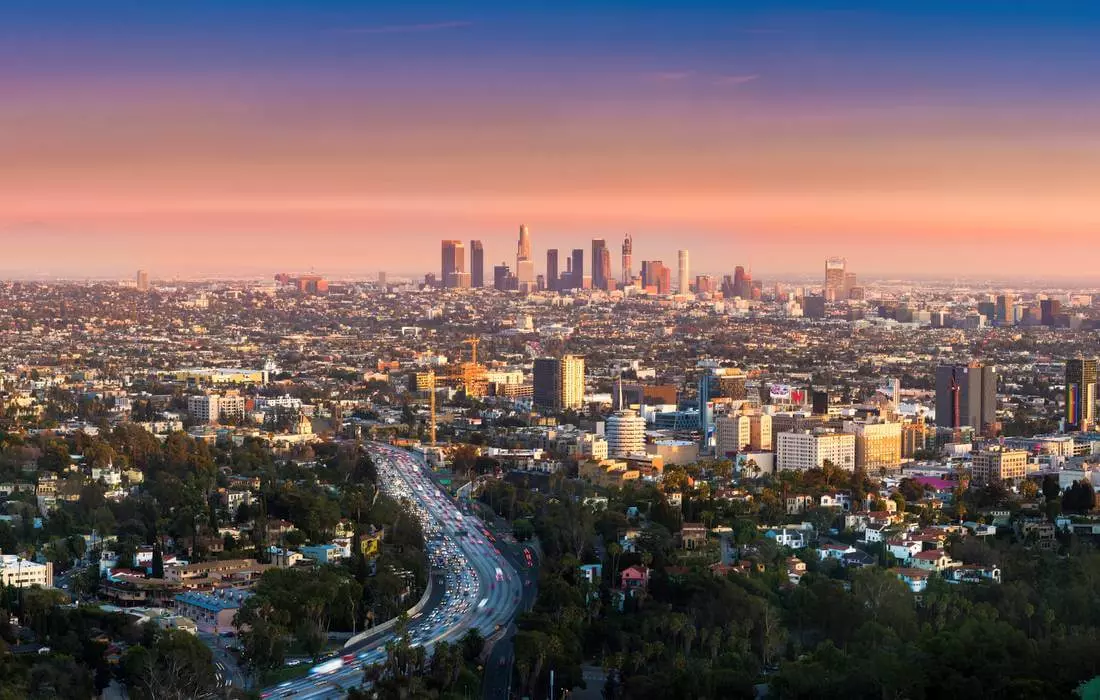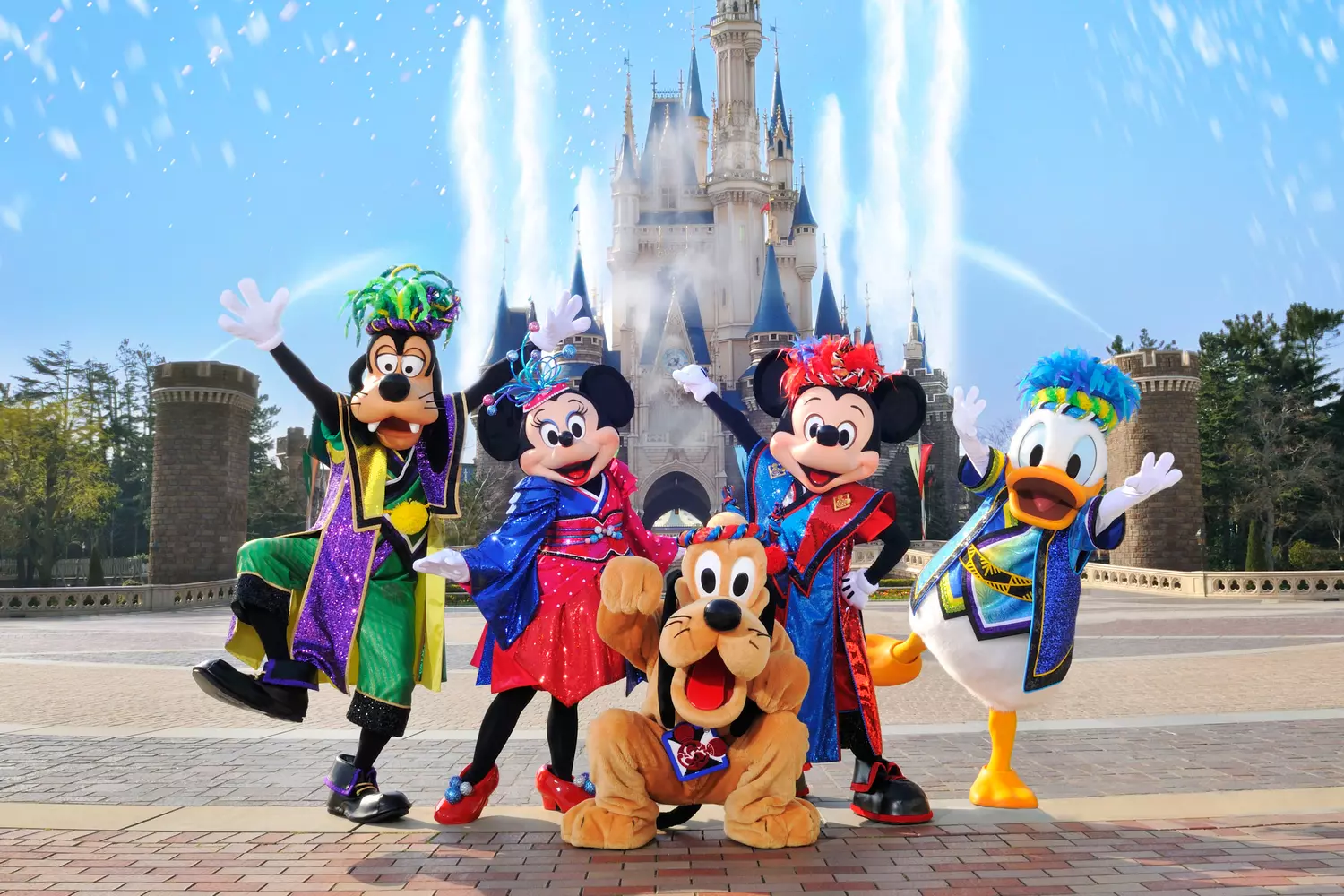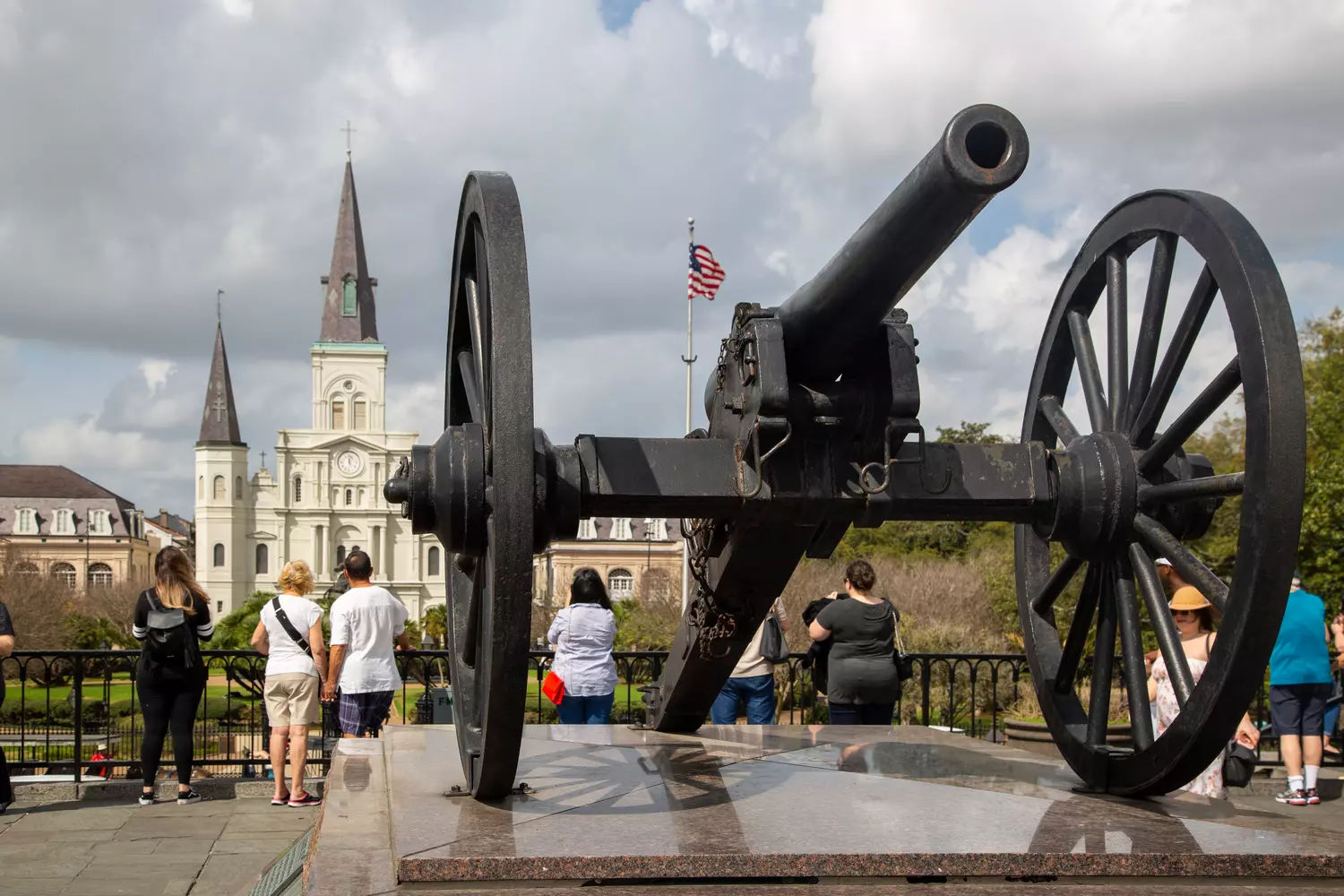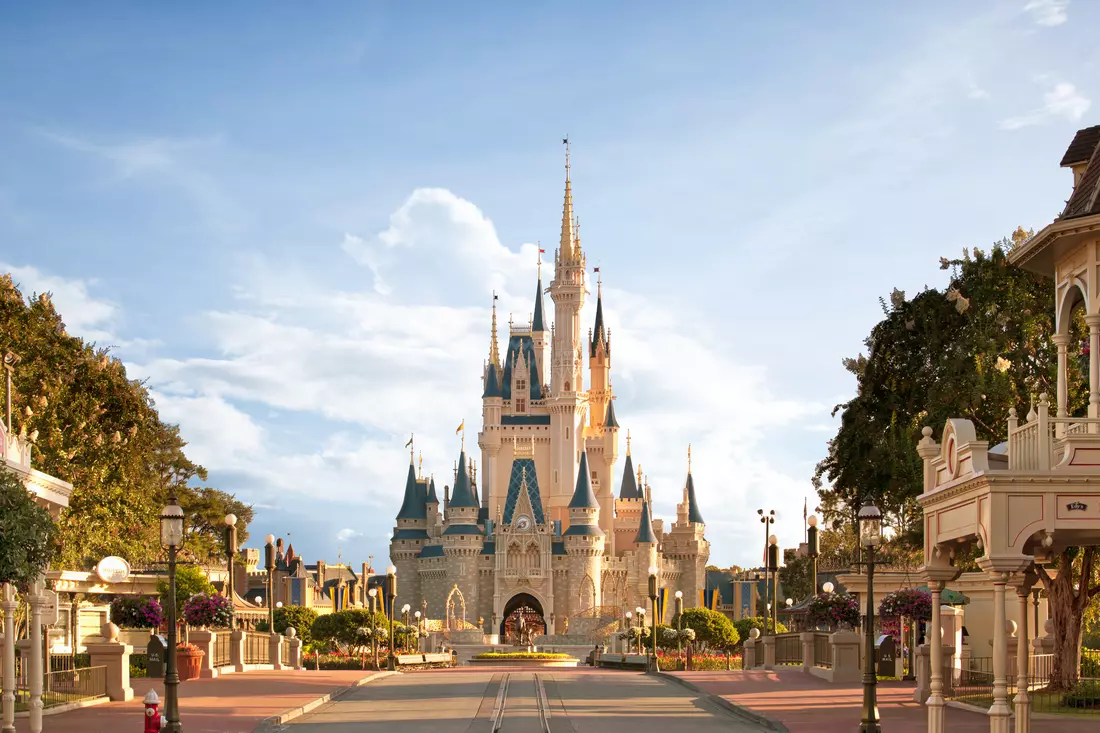U.S. politics is not just the internal workings of a single country, but a complex mechanism that shapes the future of entire regions. Decisions made in Washington, D.C. resonate far beyond America’s borders: they influence the course of the global economy, the balance of power in diplomacy, and even what tomorrow holds for millions of people around the world.
America is a superpower with military, financial, and cultural might that cannot be ignored. Yet at the same time, its political system remains the subject of lively debate. For some, it is a model democracy built on freedom and equality; for others, it is a contradictory system where liberties coexist with inequality, and openness coexists with strong lobbying and behind-the-scenes maneuvering.
To understand why the United States remains a global center of power today, one must take a deeper look at its politics. How does the system of checks and balances work? Why do U.S. presidential elections become a worldwide event? What distinguishes Democrats from Republicans? Which domestic challenges threaten the country’s stability?
By exploring these questions, we can better understand not only America, but also the very logic of the modern world, since the U.S. plays a unique role — that of the “first violin,” setting the rhythm for the global symphony.

“Ask not what your country can do for you — ask what you can do for your country.” — John F. Kennedy (35th President of the United States)
How American Democracy Was Born: The Constitution That Changed the World
When, at the end of the 18th century, thirteen colonies declared independence from the British Empire, the Founding Fathers faced a crucial question: what should the new country be like? America had no millennia-old traditions of monarchy, did not rely on a class system, and could not afford the despotism it had just rebelled against.
In 1787, the greatest minds of the era — lawyers, military leaders, philosophers, and politicians — gathered in Philadelphia. Among them were George Washington, James Madison, Benjamin Franklin, and Alexander Hamilton. They created the document that became the foundation not only for the United States but also for the development of democracy worldwide — the Constitution of the United States of America.
The Three Pillars of the American Constitution
The document established principles that still shape the country’s political system today:
- Separation of Powers
To prevent anyone from seizing total control, power was divided into three branches — legislative, executive, and judicial. - Federalism
Each state was granted the right to its own laws and autonomy while maintaining unity with other states. - Rights and Freedoms of Citizens
The Constitution enshrined fundamental rights: freedom of speech, religion, and assembly, and later — the right to a fair trial and equal protection under the law.
Interesting fact: The U.S. Constitution is incredibly concise: only 7 articles and 27 amendments. For comparison, India’s Constitution spans nearly 400 pages. This brevity made it universal — it has withstood the test of time and has remained in effect for over 230 years, making it the oldest written constitution in the world.
At the end of the 18th century, most countries were ruled by monarchs, with limited rights for the people. The American Constitution was the first modern attempt to build a state on the principles of democracy and equality, without kings or noble titles. This gave rise to Abraham Lincoln’s famous phrase:
“Government of the people, by the people, for the people.”
Today, the U.S. Constitution is not just a legal document. It is a symbol of American identity and national ideals, honored by students, politicians, and ordinary citizens alike.

The Three Branches of Government: A Balancing Act of Checks and Balances That Keeps the U.S. Steady
The system of government in the U.S. is not just a dry textbook diagram. It is a living, often conflict-prone mechanism designed to ensure that no single part of the state gains too much power. This idea — “checks and balances” — is at the heart of the Constitution and sets the rhythm of the entire political life: each “yes” from one branch of government can be partially offset by a “no” from another.
Below is a detailed breakdown of each branch: what it can do, what it cannot do, and how their interaction shapes the country’s real politics.
- 01. President (Executive Branch): The Conductor with Limited Batons
The President is the most visible political actor: the face of the country, head of the executive branch, and Commander-in-Chief. People tend to judge the performance of the government by what he does (or doesn’t do). But it’s important to understand — the President is not all-powerful. What the President can do:
- Represent the country internationally, conduct negotiations, and sign international agreements (some of which require Senate ratification).
- Appoint high-ranking officials, federal judges, and Cabinet members — but these appointments require Senate approval (the “advice and consent” mechanism).
- As Commander-in-Chief, make operational decisions in the military and defense, although the power to declare war rests with Congress.
- Issue executive orders and directives that guide federal agencies (though they do not have the force of law themselves and can be challenged in courts).
- Exercise the right to grant pardons and commute sentences for federal offenses.
Limits and “checks”: - The President does not make laws — he can propose initiatives, but only Congress has legislative power. Signing or vetoing is his role, but a veto can be overridden.
- Appointments are reviewed by the Senate: without advice and consent, many key personnel decisions remain on paper.
- The judiciary can declare administrative actions unconstitutional.
- Congress controls the budget: without legislative approval, many presidential projects remain unfunded.
It is precisely this combination of initiative (by the President) and the veto/appointment/control powers of Congress that makes the executive branch powerful but not dominant.
- 02. Congress (Legislative Branch): A Bicameral Body with Its Own Logic
Congress is the “first-order chamber” where federal laws are born. It consists of two parts: the House of Representatives and the Senate. Each chamber has unique functions and instruments of influence.
- House of Representatives
Traditionally closer to the voter: members are elected every 2 years, and this is formally where revenue and tax laws originate (the so-called “origination clause”). - Senate
Acts as a restraining link: senators are elected for 6 years, and the Senate has unique powers — it confirms presidential appointments and ratifies international treaties (ratification requires a supermajority). - House of Representatives
Has the power to bring charges (impeachment) against federal officials — analogous to an “indictment.” Congress issues articles of impeachment if the House majority supports the charges.
The Senate then conducts the trial: this is where it is decided whether the official will be removed from office (a qualified majority is required for conviction).
The Senate is not just a “second chamber”; it has procedures (e.g., the possibility of extended debates and the so-called filibuster) that allow the minority to slow down or modify legislation. Cloture, the procedure to end endless debates, usually requires three-fifths of the full Senate (60 votes), which effectively makes many laws subject to negotiation and compromise.
The interaction between the House and the Senate, with their different terms and representation logic, creates a dynamic where rapid political changes often encounter the need for broad consensus.
- 03. Supreme Court (Judicial Branch): The Ultimate Arbiter and Interpreter of the Constitution
The Judiciary plays a key role in the U.S. because it has the right — and established practice — to overturn actions of the other branches if they conflict with the Constitution. This is not just a legal process — it is a way to preserve the fundamental principles of the state.
- Supreme Court justices are appointed for life (and remain in office during “good behavior”). This institution was designed to ensure independence and experience at the highest judicial level.
- Judicial review is the principle by which courts can invalidate laws and government actions if they contradict the Constitution. This mechanism was firmly established in American legal tradition after Marbury v. Madison (1803), where the Supreme Court asserted its duty to “say what the law is.”
- The Supreme Court often rules on contentious political and social issues — from individual rights to the limits of government power. Its decisions carry the force of law and shape legal practice for years to come.
- Although the courts have no army or budget, their rulings fundamentally change reality: the invalidation of a law or a declaration of executive actions as unconstitutional automatically alters the political playing field.
Judicial appointments are another point of intersection between the branches: the President nominates candidates, the Senate confirms them — thus, the ideological balance of the court becomes a subject of political struggle.
The theory of “checks and balances” works perfectly as long as political actors follow the rules and norms. But in practice, there are several important nuances:
- Procedures (filibuster, committee assignments, budget maneuvers) often prove as important as the letter of the Constitution. They set the pace and tone of Congress’s work.
- Political culture and traditions (including unwritten “handshake deals” and bargains) influence how formal powers are exercised.
- In critical moments, it is precisely the interaction between branches — compromises, court decisions, and parliamentary procedures — that determines whether stability is maintained or a crisis occurs.

The Political Rivalry of the Century: Democrats vs. Republicans
In the U.S., the party system has long become an arena for a duel between two giants — the Democratic and Republican parties. Their rivalry is not just a struggle for power, but a clash of worldviews, approaches to the economy, social policy, and even America’s role in the world. For voters, the choice between Democrats and Republicans is a choice of the country’s path: from taxes and healthcare to international diplomacy and matters of war and peace.
The Democratic Party of the U.S.: From a Farmers’ Party to a Progressive Force of the 21st Century
The Democratic Party is the oldest active political party in the U.S. and one of the oldest in the world. Its history begins in the early 19th century, and over more than 200 years it has undergone an incredible transformation — from a party of farmers and slave owners to a symbol of liberalism and progressive reforms.
- 01. Origins and Formation
The party was founded in 1828 by a supporter of “popular democracy” and the seventh President of the U.S., Andrew Jackson. For this reason, Democrats are sometimes called the “party of Jefferson and Jackson” — after the early ideologists advocating for a strong but more “people-centered” government. Initially, Democrats represented the interests of southern states, farmers, and artisans, opposing excessive federal interference in regional affairs.
However, history did not stand still. By the mid-19th century, the party was at the epicenter of a heated conflict over slavery. Southern Democrats supported its preservation, which ultimately contributed to the Civil War. After the Confederacy’s defeat, the party lost influence, and Republicans became the dominant political force for decades. - 02. Turning Point: 20th Century
The Democratic Party’s transformation began in the early 20th century. With the rise of Franklin Delano Roosevelt in the 1930s, the party became associated with the idea of the welfare state. Roosevelt’s “New Deal,” including reforms in employment, social support, and economic regulation, turned the Democrats into a party for the “common man” — workers, immigrants, and the underprivileged.
In the postwar decades, Democrats focused on the rights of minorities, women, and African Americans. President Lyndon Johnson signed the Civil Rights Act in 1964, ending official racial segregation in the U.S. From that point, the party fully embraced progressive values. - 03. Ideology and Values Today
Modern Democrats advocate for:
- Progressive taxes
The wealthy pay more, the poor receive protection. - Protection of Minority Rights
Ethnic, gender, and LGBTQ+ rights. - Environmental Agenda
Combatting climate change and promoting green energy. - Soft Foreign Policy
Emphasis on diplomacy rather than military intervention. Democrats made climate a global issue. President Barack Obama signed the Paris Climate Agreement in 2015, and the Joe Biden administration recommitted the U.S. after its withdrawal under Trump.
- 04. Symbols and Electorate
The party’s symbol is the donkey. Legend has it that this nickname was coined by Jackson’s political opponents, but he turned the mockery into a strength: a donkey is stubborn but reliable. The party color is blue, and its strongholds today are major cities, northeastern and western states, and areas with high minority populations.
The Democratic electorate includes youth, women, African Americans, Latinos, LGBTQ+ people, and urban residents. Thanks to these groups, the party won the 2008 election, bringing Barack Obama to the White House — the first African American president in U.S. history.
Interesting fact: Throughout the 20th century, Democrats radically shifted their political course several times. In the 19th century, they defended slavery, but by the end of the 20th century, they became the main advocates for minority rights. Such a turnaround is rare in world politics and explains how Democrats have remained relevant for over two centuries.
The Republican Party of the U.S.: From the Fight Against Slavery to a Conservative Symbol of America
While Democrats began as a party for the “common man,” Republicans were born from a wave of moral protest. Their history spans the fight against slavery and the preservation of national unity to becoming the main force of American conservatism.
- 01. Foundation and Early Steps
The Republican Party emerged in 1854 in the northern states, driven by opposition to the expansion of slavery into new territories. Former Whigs, abolitionists, and civil rights activists rallied around this idea. The name “Republican” emphasized loyalty to republican governance and freedom.
Six years later, in 1860, its candidate Abraham Lincoln won the presidency, becoming the first Republican president. His victory triggered the Civil War: southern states, where slavery was the economic foundation, seceded from the Union. - 02. Lincoln and the Legacy of the Civil War
Abraham Lincoln became the symbol of the Republicans. Under his leadership, the country stayed united, and slavery was officially abolished. In 1863, he signed the Emancipation Proclamation — a historic document that forever changed American history.
After the war, the party faced the challenge of governing a devastated country, reconstructing the South, and maintaining political power. - 03. Republicans in the 19th–20th Centuries
In the late 19th century, Republicans became the party of industrialists and entrepreneurs. Their policies increasingly supported business, railroad construction, and industrial development, earning them the nickname “the party of big capital.”
In the 20th century, the party solidified its image as a defender of traditional values. President Dwight Eisenhower became a symbol of stability postwar, and Ronald Reagan in the 1980s gave Republicans new momentum. His economic policy, known as Reaganomics, combined tax cuts, deregulation, and a focus on free markets. For many conservatives, Reagan remains an iconic figure. - 04. Ideology and Values Today
Modern Republicans advocate for:
- Economic Liberalism
Lower taxes, minimal government intervention in the economy. - Traditional Family Values
Focus on religion, patriotism, and traditional morality. - Strong Defense
Prioritizing military power and protecting national interests abroad. - Immigration Control
Stricter border and visa policies. - Individual Responsibility
Emphasis on personal success and minimal reliance on government programs.
Republicans are traditionally associated with the “red belt” of America — rural regions, southern and central states. Their electorate includes farmers, small and medium business owners, religious groups, and residents of the countryside.
- 05. Symbols and Electorate
The party’s symbol is the elephant, first appearing in a 19th-century political cartoon and quickly taking hold. The Republican color is red. Unlike Democrats, who rely on cities and minorities, Republicans are strong in rural areas, the South, and the Midwest. - 06. The Trump Era and New Challenges
The 2016 election was a turning point for the party. Donald Trump, a billionaire and showman, gained support from the “forgotten America” — industrial state workers, globalization skeptics, and opponents of political correctness. His slogan “Make America Great Again” became the symbol of a new wave of Republicans.
The Trump era showed that the party can change while remaining true to its core principles. Today, Republicans balance classical conservatism with populist rhetoric, but their influence on American politics remains enormous.
Interesting fact: Although Republicans are often seen today as conservatives, they once carried out some of the most radical reforms — the abolition of slavery and preservation of the Union. This is a striking example of how a political party can evolve and change its face over centuries.
Duel of Giants: How Democrats and Republicans Shape Modern U.S. Politics
Political life in the U.S. is almost entirely centered around the confrontation between two parties — the Democratic and Republican parties. Their rivalry is not just a competition for the White House every four years, but a continuous struggle of ideas, values, and approaches to governing the country.
- 01. Party Duopoly: The Essence of the Modern System
The U.S. has almost always been a country dominated by two major parties. Other forces exist, but their influence at the federal level is minimal. Democrats and Republicans set the agenda, allocate budgets, determine the international course, and directly impact the lives of every citizen. Each party has its core base of support:
- Democrats
Youth, urban residents, minorities, LGBTQ+ individuals, progressive activists. - Republicans
Rural America, southern and central states, conservatives, business owners, religious groups.
These differences in electoral bases define the key lines of conflict: taxes, social programs, healthcare, immigration, climate, and defense.
- 02. Elections: The Arena of Battles
Elections in the U.S. are not just a matter of citizens casting votes. It is a complex system:
- Presidential Elections
Conducted through the Electoral College system, where states allocate votes according to population. Sometimes a candidate with fewer votes nationwide wins the election (as happened with George W. Bush in 2000). - Congressional Elections
Held every two years for the House of Representatives and every six years for the Senate, creating a dynamic environment that allows parties to adjust the balance of power between the presidency and the legislative branch.
Political competition involves campaigns, debates, social media, large-scale financing, as well as active participation from lobbyists and corporate and civic interest groups.
- 03. Conflicts and Compromises
Although the confrontation often appears as “red versus blue,” in practice, parties are forced to seek compromises:
- The federal budget and taxes are agreed upon only through negotiations.
- Important laws go through committees, where the minority can slow the process.
- In emergencies (such as a pandemic or financial crisis), parties unite to adopt urgent measures, even if they contradict the usual ideological line.
- 04. Impact on Society
The partisan divide shapes the everyday life of Americans:
- Who controls Congress affects access to healthcare.
- Immigration and security policies directly impact millions of families.
- Social reforms and minority rights laws depend on the party majority and the ideology of leaders.

The End of the Two-Party Monopoly? Why the U.S. Is Increasingly Speaking in Different Voices
The American political scene has long been the arena of two parties — Democrats and Republicans. Their duopoly provided stability: the public knew who was responsible for what, and candidates competed for centrist positions to attract the majority of voters. But the 21st century brought new challenges, and today there is increasing talk that the traditional two-party system is losing its strength.
- 01. Societal Polarization: "Reds" vs. "Blues"
The main threat to the two-party system is societal polarization. People stop listening to each other and perceive politics as a battle against an enemy rather than a search for compromise. Causes include:
- Media and social networks
News and commentary are tailored to the audience’s worldview. Algorithms trap people in informational bubbles: Democrats primarily receive “blue” news, Republicans — “red.” - Regional differences
Residents of big cities, university towns, and suburbs mostly vote for Democrats. Rural America and southern states favor Republicans. The distance between “city” and “country” has become not just geographic, but cultural. - Ideological narrowing
Party leadership increasingly caters to the radical core of their supporters, while centrist policies lose influence.
- 02. Multiple "Languages" Within Society
Today, the U.S. speaks many “political languages”:
- Economy and taxes
Some call for reducing government programs, others insist on expanding social protections. - Immigration and identity
Debates over borders, migrant rights, and national culture generate emotional conflicts. - Climate and technology
Some consider combating climate change critically important, while others see it as a threat to business and jobs.
Result: each group lives in its own informational and value space. Literally — they speak different languages and barely hear each other.
- 03. Political Consequences
Polarization and the loss of a “common language” in society are reflected in politics:
- Blocking legislation
Congress increasingly struggles to make major decisions. Filibusters and procedural tricks have become the norm. - Growth of radical movements
Supporters of both parties move to extremes, undermining the influence of centrists. - Decline in trust toward institutions
According to surveys, a significant portion of Americans believe Congress does not address the country’s real problems.
- 04. Attempts to Overcome the Crisis
Despite alarming signs, there are indications that the system is trying to adapt:
- The rise of independent candidates and small parties offering an alternative to the duopoly.
- Efforts to form coalitions in Congress to address specific issues (e.g., infrastructure, healthcare).
- Media and educational platforms striving to present diverse perspectives without aggression or political bias.
Interesting fact: In the 2020 presidential election, the number of independent voters reached approximately 40%, nearly equal to the supporters of each of the two major parties. This means that many Americans no longer identify strictly as “red” or “blue” but seek alternative voices. Experts believe this could mark the beginning of a gradual transformation of the U.S. political system.

U.S. Domestic Politics: 21st-Century Challenges and the Battle for the Country’s Future
Modern United States faces challenges that require not only political skill but also the ability to listen to society. In the 21st century, domestic issues have become so complex and intertwined that every law and every reform turns into a subject of heated debate. Let’s take a closer look at the main challenges the country is facing.
- 01. Social inequality: the rich get richer, the poor get poorer
America has always been known as the "land of opportunity", but the reality of recent decades shows a growing gap between the rich and the poor. According to Federal Reserve data, the top 1% of the population controls over a quarter of all the country’s wealth. Causes of inequality include:
- The tax system, which often favors wealthy groups.
- The decline of high-paying industrial jobs and the shift of the economy to services and IT.
- Rising costs of education and housing, making the path to the middle class increasingly difficult.
Consequences: social discontent grows, protest movements intensify, and political polarization increases. Addressing economic inequality has become a central point of the Democratic platform, while Republicans focus on tax cuts and business stimulation as a way to create jobs.
- 02. Immigration: a land of opportunity or a source of conflict?
The U.S. attracts millions of migrants from around the world — from Latin America to Asia and Africa. Immigration creates demographic diversity, stimulates the economy, and promotes cultural development. But it also raises sharp political issues:
- Borders and security
Debates about walls, visa quotas, and deportations regularly become the subject of federal and local discussions. - Migrant rights
Legal and illegal migrants face various restrictions, including access to healthcare and education. - Economic pressure
Local residents sometimes fear that new immigrants will take jobs or lower wages.
Interestingly, most immigrants in the U.S. arrive through legal work and study programs, but illegal migration sparks the loudest political debates and is used as a tool in party rhetoric.
- 03. Racial and cultural polarization: movements changing the country
Equality and racial justice remain sensitive issues for American society. Movements like Black Lives Matter have shown that issues seemingly resolved legally still persist in everyday life:
- Excessive police power and racial discrimination.
- Unequal access to quality education and healthcare.
- Differences in income and career prospects among ethnic groups.
These issues are actively discussed in the media, on social networks, and in political debates. Party competition is particularly noticeable here: Democrats emphasize reforms and equality, while Republicans raise questions of law and public order.
- 04. Healthcare: expensive, complicated, and controversial
The U.S. healthcare system is considered one of the most expensive in the world. Despite the high quality of medical services, access is limited for millions of citizens:
- High insurance premiums and drug costs.
- The debate over universal access to medical care remains unresolved.
- Societal polarization over reforms — Democrats advocate expanding Medicaid and Obamacare programs, while Republicans call for cost reduction and privatization.
This issue became especially evident during the COVID-19 pandemic, when it became clear that many Americans lacked access to basic healthcare services.
- 05. Guns: rights and risks
The right to bear arms is enshrined in the Second Amendment of the Constitution, but mass shootings present the country with acute moral and political dilemmas:
- Hundreds of mass shootings occur annually in the U.S., including in schools, universities, and public spaces.
- Debates between gun rights advocates and supporters of stricter control intensify after each tragic event.
- Party divisions are particularly evident here: Democrats call for stronger control, Republicans advocate protecting citizens’ right to self-defense.
Domestic policy in 21st-century U.S. is both a challenge and an opportunity. The country faces inequality, immigration, racial and cultural polarization, healthcare issues, and gun-related debates. These issues are interconnected, forming a complex political and social landscape.
American democracy is being tested by time, and how the country addresses these challenges will determine its stability, development, and role in the world.

U.S. Foreign Policy: How America Maintains Its Influence in the 21st Century
The United States remains a global superpower, and its foreign policy is a complex combination of diplomacy, military strength, and economic influence. Despite domestic challenges, the U.S. continues to shape global processes, setting economic and political trends. Let’s take a closer look at the key directions of America’s foreign strategy.
- 01. Containing rivals: China, Russia, and global competition
America views certain countries as competitors capable of challenging its global leadership. The greatest concerns are:
- China
China’s economic growth and technological development create competition in trade, technology, and the military sphere. The U.S. responds through sanctions, trade agreements, and strengthening military presence in the Pacific region. - Russia
Russia’s geopolitical activities, including military conflicts and interference in other countries’ elections, are perceived as a direct challenge to the security of the U.S. and its allies. - Regional players
Iran, North Korea, and other countries raise security concerns and nuclear threats.
Containing rivals is implemented comprehensively: diplomatic negotiations, economic sanctions, strengthening allies’ defense, and direct military presence in key regions.
- 02. Alliances and partnerships: a guarantee of stability
Strong foreign policy is impossible without maintaining allies. The U.S. invests in:
- NATO
The North Atlantic Alliance remains the foundation of European security. The U.S. provides a significant portion of the alliance’s military budget and participates in exercises, peacekeeping operations, and strategic planning. - Asian partnerships
The U.S. actively cooperates with Japan, South Korea, Australia, and India to balance China’s influence and ensure security in the Indo-Pacific region. - Middle East cooperation
Partnerships with Israel, Saudi Arabia, and other regional countries help secure U.S. strategic interests, including energy security and counterterrorism.
Alliances not only strengthen security but also give the U.S. political influence: through joint initiatives and diplomatic efforts, America sets global standards in trade, human rights, and international security.
- 03. Economic power: the dollar, sanctions, and global markets
The U.S. economy is a key instrument of foreign policy. The dollar remains the world’s main currency, allowing America to influence international financial flows. Main tools of economic leverage include:
- Sanctions
The U.S. uses economic restrictions to influence foreign governments, especially in energy, finance, and technology sectors. - Trade agreements
Negotiations on tariffs and agreements allow the U.S. to promote its interests and protect domestic producers. - Investments and aid
America actively invests in strategic regions, providing financial and technical assistance, strengthening economic ties, and creating political dependence.
Economic power allows the U.S. to influence global processes without direct force, making the economy a foreign policy tool as important as diplomacy and the military.
- 04. Balance of power: military strategy and global presence
In addition to alliances and the economy, the U.S. maintains a global military presence: bases, fleets, and air forces in key regions. The goals are:
- Ensuring allies’ security
Strategic bases in Europe, Asia, and the Middle East serve as a guarantee of protection for partners. - Power projection
The U.S. military capabilities allow for responding to crises, conflicts, and threats worldwide. - Deterring aggression
Concentrating forces near potential conflict zones creates a strategic “deterrence” effect for opponents.
Interesting fact: After World War II, the U.S. spent billions of dollars creating a system of alliances and economic influence — the Marshall Plan not only rebuilt Europe but also strengthened America’s position for decades. Today, this strategy has evolved into a modern complex of diplomatic, economic, and military instruments that allow the U.S. to remain a global leader.

The U.S. Electoral System: How Americans Choose Their President
The U.S. presidential election is one of the most complex and fascinating processes in global politics. At first glance, it may seem that the president is elected simply by a majority of citizens’ votes. In reality, the system works differently, and understanding its intricacies helps explain why each campaign turns into a strategic battle.
- 01. The Electoral College: essence and principle
The President of the United States is not elected directly, but through the Electoral College. Each state is allocated a certain number of electoral votes, determined by the sum of its senators and representatives in the House (the number depends on the state’s population).
- There are a total of 538 electors in the Electoral College.
- To become president, a candidate must secure 270 electoral votes.
- Votes are distributed on a “winner-takes-all” basis in most states: the candidate who wins the state receives all of its electoral votes. Exceptions are Maine and Nebraska, where a proportional system is used.
This means a candidate can win the presidency even if they receive fewer nationwide votes than their opponent. This happened in 2000 with George W. Bush and in 2016 with Donald Trump.
- 02. The campaign: strategic battle for key states
Since states are not equal in electoral votes, candidates focus on swing states (or battleground states).
- For example, Florida, Pennsylvania, Ohio, and Michigan often determine the election outcome.
- In “safe” states (e.g., California for Democrats or Texas for Republicans), candidates spend fewer resources.
- Advertising, rallies, and voter meetings in these states become decisive.
This turns the presidential election into a chess game, where every piece and move is carefully planned.
- 03. Popular vote vs. Electoral College
Americans participate in the popular vote, but it does not guarantee victory:
- Voters cast ballots for the candidate they believe will represent their state in the Electoral College.
- In most states, the winner of the popular vote receives all of the state’s electoral votes.
- Thus, winning key states is more important than simply having the most votes nationwide.
This system makes every election unique: sometimes a candidate with fewer popular votes still becomes president.
- 04. Problems and criticism of the system
The Electoral College raises many questions and criticisms:
- State influence imbalance
Smaller states have relatively more representation in elections than larger ones. - Unequal reflection of votes
The popular majority can lose in the Electoral College. - Campaign polarization
Candidates focus on a limited number of states, leaving the rest of the country largely ignored.
Despite criticism, the system has been in place for over two centuries, and its defenders argue that it balances the interests of states with federal authority.
Interesting fact: In 2016, Donald Trump received about 2.9 million fewer votes than Hillary Clinton, but won the Electoral College 304 to 227. This case became one of the most discussed in U.S. history and highlighted the uniqueness of the American electoral system.
From Federalist to Trump: the evolution of U.S. presidential power over 250 years
The President of the United States is not just the head of state but also a symbol of the entire American political system. Over 250 years, the role and powers of the office have undergone significant changes: from a modest “first citizen” to a superpower leader capable of influencing the entire world. Let’s explore how presidential authority has evolved throughout history.
- 01. Federalists and the early republic: a modest leader
At the end of the 18th century, when the U.S. Constitution was adopted, the president was a limited authority figure. George Washington, the first president, set an example of a cautious leader:
- He understood the importance of establishing precedents and carefully shaped traditions.
- The president’s powers were limited by the Constitution: signing laws, directing foreign policy, leading the army, but without the right to make laws independently.
- Washington created the first Cabinet and established the tradition of the “first citizen”—a leader who serves the country, not personal power.
Federalists sought strong executive authority but avoided authoritarianism. The president’s role was more coordinating than directive.
- 02. 19th century: expanding powers through crises
In the 19th century, the U.S. faced numerous challenges—wars, territorial expansion, economic crises. This led to increased presidential power:
- Andrew Jackson (1829–1837)
Demonstrated strong personal power, using the veto as a political tool and appealing directly to the public through messages and rallies. - Abraham Lincoln
During the Civil War, took extraordinary measures: expanded the army, suspended certain civil liberties, and issued the Emancipation Proclamation.
These examples show that presidential power grows during national crises, when rapid decision-making is required.
- 03. 20th century: a global-scale leader
By the 20th century, presidential power acquired a global character:
- Theodore Roosevelt
Introduced the “Big Stick” doctrine and actively used international agreements to promote U.S. interests. - Franklin D. Roosevelt
During the Great Depression and World War II, expanded federal government role, created social programs, and led the country through wartime crises. - The Cold War
Solidified the president’s role as commander-in-chief and strategic leader in opposition to the USSR.
The president became not only a national but also an international leader, capable of influencing the economy, diplomatic alliances, and global security.
- 04. Late 20th — early 21st century: from Bill Clinton to Trump
Modern presidents continue to combine tradition with new approaches:
- Bill Clinton and George W. Bush
Used media and public appearances to influence public opinion and the political process. - Barack Obama
Actively integrated digital technologies and social media into communication with citizens, strengthening the image of a “new type of leader”. - Donald Trump
Showed how a president’s personality can directly shape the political agenda, bypassing traditional media and communicating with the electorate via social platforms.
Today, the president is not only the head of the executive branch but also a strategist, public leader, diplomat, and symbol of national unity.
Although presidential power has grown significantly, the U.S. Constitution remains the same—with seven articles and 27 amendments. This is a unique example of how the flexibility of the political system allows the office to evolve without altering fundamental principles.
Interesting fact: Each new U.S. president takes the oath of office with a hand on the Bible. However, this is not a formal requirement: another book may be used. For example, John Kennedy swore on a Catholic prayer book, while Lyndon Johnson used a Catholic missal found on the presidential plane after Kennedy’s assassination.

Behind the Scenes of the Electoral Machine: How Data, Money, and Digital Technology Shape the Winners
U.S. elections have long ceased to be just a voting process. Today, it is a complex system where not only candidates’ speeches and rallies matter, but also data on every voter, millions of dollars spent on campaigns, and modern digital technologies. Behind the debates and televised discussions lies a true machine that shapes the election outcome.
- 01. Data as the basis of strategy
Modern campaigns are built on information about millions of citizens:
- Microtargeting
Parties and candidates collect detailed data on voters’ preferences, habits, and demographics. This allows them to show each person personalized ads and messages that influence their decision. - Elector analytics
Systems analyze which states are swing states, which districts within states are key, and where resources need to be concentrated. - Social media and behavioral data
Likes, shares, video views, and app activity help gauge voter sentiment and adjust the campaign in real time.
Data gives candidates the ability to work precisely, using resources efficiently and increasing their chances of winning in swing states.
- 02. Money talks
American elections are among the most expensive in the world. In 2020, spending on the presidential campaign exceeded $14 billion. Funds go to:
- Advertising and media
TV, radio, online ads, billboards, and direct mailings. - Teams and campaign offices
Analysts, political consultants, advisors, and volunteers. - Research and polls
Continuous monitoring of the electorate allows for strategy adjustments.
Financial advantage provides the ability to reach more voters and strengthen the candidate’s public image.
- 03. Digital technologies: new rules of the game
Digitalization has radically changed election campaigns:
- Social media
Twitter, Facebook, Instagram, and TikTok allow candidates to reach audiences directly, bypassing traditional media. Candidates post short videos, memes, news, and messages that spread instantly nationwide. - Analytics platforms
AI and algorithms predict voter reactions to every message and ad campaign. - Online polls and databases
Technologies enable dynamic lists of supporters and discontented citizens, adjusting tactics and increasing presence in key regions.
As a result, digital technologies turn campaigns into a high-tech process where every action is carefully measured and analyzed.
- 04. Impact on election outcomes
The combination of data, money, and technology creates a unique effect:
- Candidates can precisely target votes in key areas.
- Messages become personalized and emotionally impactful.
- Chances of winning in key swing states are significantly higher with an effective strategy.
Thus, winning an election is not only about a politician’s talent or charisma but also about precise campaign engineering based on numbers and technology.
Interesting fact: In the 2012 election, Barack Obama’s team processed billions of data points to tailor targeted ads and mobilize voters. This was the first large-scale example of how analytics and digital technologies can truly influence the outcome of a presidential campaign.
Not Red or Blue: The Rise of “Purple” States and the Power of Every Vote
American politics is traditionally divided into red (Republican) and blue (Democratic) states. However, the 21st century shows that the landscape has become more complex: the influence of so-called “purple” states (swing states) is growing, where electoral balance is not fixed for one party. Here, every vote becomes incredibly important, and election outcomes can depend on thousands—and sometimes even hundreds—of votes.
- 01. What are “purple” states?
“Purple” states are regions where electoral support is almost evenly divided between Democrats and Republicans. Their characteristics include:
- Unpredictability
Victory can swing from election to election. For example, Florida and Pennsylvania often determine presidential campaign outcomes. - Population diversity
These states combine rural and urban areas, wealthy and poor residents, immigrants and native-born citizens. - Significant influence on the Electoral College
Despite having fewer votes than large states like California or Texas, winning purple states often determines the president.
Because of their role, candidates focus their main resources on these regions, from advertising to visits and rallies.
- 02. Why every vote matters
In purple states, even small shifts in the electorate can change the outcome:
- In the 2000 election, the result in Florida was decided by just 537 votes, determining George W. Bush’s victory.
- In 2016, key purple states such as Michigan, Wisconsin, and Pennsylvania gave Donald Trump the win despite losing the popular vote.
Every voter in these states becomes strategically important: campaigns use microtargeting, social media, and preference data to reach the right audience.
- 03. Factors that make a state “purple”
Reasons why a state remains unpredictable include:
- Demographic changes
Growth of immigrant populations, migration from cities to suburbs, and economic shifts can alter the political landscape. - Urban-rural divide
Urban centers tend to vote Democratic, rural areas Republican. Border districts become real “battlefields.” - Issue polarization
Healthcare, the economy, immigration, and gun rights influence voter sentiment in unique combinations in each state.
- 04. Political strategy: fighting for every percentage point
Purple states turn campaigns into a chess game where every move matters:
- Intense advertising in local media and social networks.
- Personalized messages targeting specific voter groups.
- Rallies, town halls, and active volunteer engagement to mobilize votes.
The strategy in these states becomes decisive not only for the election but also for shaping the national political agenda.
Interesting fact: Florida is a classic example of a purple state. Over the past 30 years, it has changed its presidential election winner eight out of nine times, symbolizing how even hundreds or thousands of votes can determine the country’s future.

Lobbying and Money in Politics: How Interests Shape Decisions in the U.S.
American democracy is often described as an example of transparent and balanced governance. But behind the facade of public debates and elections lies a powerful system of influence — lobbying, where money, connections, and strategic alliances play a key role in decision-making.
- 01. The essence of lobbying: who and how influences politics
Lobbying is an activity aimed at influencing legislation, regulations, and policy to promote the interests of certain groups. In the U.S., it is particularly developed due to the complex Congressional system, where hundreds of bills are discussed simultaneously. The main players in lobbying include:
- Corporations
Large companies, especially in energy, pharmaceuticals, IT, and finance, invest millions to advocate for their interests. - Unions and labor associations
They fight for workers' rights, working conditions, and social guarantees. - Public and environmental organizations
These groups lobby for reforms in areas such as environmental protection, healthcare, and education. - Individual donors
Wealthy citizens can influence politics through direct donations to candidates and parties.
Lobbyists use legal tools: meetings with legislators, participation in committees, preparation of analytical materials, media campaigns, and public pressure.
- 02. Money as the fuel of political influence
The financial aspect of lobbying is incredibly powerful. In 2022 alone, more than $3.5 billion was spent on lobbying in the U.S. Money is used for:
- Funding political campaigns
Donations help candidates run aggressive advertising and mobilize supporters. - Research and analytics
Lobbyists provide detailed reports on how bills affect industries whose economies depend on Congressional decisions. - PR and media campaigns
Through press and social media, lobbyists shape public opinion in favor of desired initiatives.
Without financial support, many bills would simply not see the light of day or receive adequate attention.
- 03. Influence on laws and policy
Lobbying affects almost all areas:
- Economy
Tax, subsidy, and tariff laws are often shaped under the influence of large corporations. - Healthcare
Pharmaceutical companies actively lobby for price regulation and approval of new drugs. - Energy and environment
Energy giants and environmental organizations fight for their interests, influencing climate and energy legislation.
This creates constant interaction between business, society, and politics, making the decision-making process complex and multilayered.
- 04. Ethics and criticism of lobbying
Despite its legality, lobbying sparks debate:
- Critics point to the influence of large sums of money on democratic processes.
- Concerns arise when corporate interests outweigh those of citizens.
- At the same time, lobbying allows experts and specialists to convey knowledge and arguments to legislators, sometimes improving the quality of decisions.
The quote from President Harry Truman aptly reflects the essence: “In Washington, if you want a friend, get a dog.”
This ironic remark highlights that connections, contacts, and personal relationships carry enormous weight in politics.
Interesting fact: In 2020, the top 10 lobbying organizations spent over $500 million just to advance their interests in the U.S. Congress. These included major pharmaceutical companies, energy corporations, and tech giants. This demonstrates how deeply money and lobbying are integrated into the country's political system.

U.S. Political Culture: How Civic Engagement and a Sense of Responsibility Are Formed
Political culture in the U.S. is not just about knowing the Constitution and participating in elections. It is a deeply rooted, historically shaped sense of civic responsibility, personal freedom, and the right to vote. It defines how Americans interact with the government, society, and each other, making the political process a part of everyday life.
- 01. Civic education from childhood
Americans learn history and the Constitution from an early age. In schools:
- They study citizens' rights and responsibilities, the structure of government, and the role of elections.
- Simulations of elections are conducted, and debates and key political events are discussed.
- Students participate in clubs, debate competitions, and youth parliaments.
Such education fosters a deep understanding of democracy and the sense that every vote matters.
- 02. Active participation in society
Americans are used to being part of political life:
- Elections
Participation in presidential and local elections is an important habit, although turnout can vary by state. - Protests and movements
The history of the U.S. is full of examples of peaceful and mass actions: the women's rights movement, Black Lives Matter, protests against the Vietnam War. - Civic initiatives
Americans create petitions, contact local and federal authorities, participate in community organizations and volunteer projects.
This level of engagement fosters a sense of personal responsibility for societal processes.
- 03. Individualism and freedom of speech
U.S. political culture is closely linked to the value of personal freedom and freedom of speech:
- Americans actively discuss politics in public spaces — at work, in universities, and on social media.
- Even conflicting opinions are seen as a natural part of democracy.
- The media plays a huge role, providing a platform for exchanging opinions and criticizing authority.
Freedom of expression allows citizens to influence politics through discussions, actions, and participation in elections.
- 04. Social and cultural characteristics
U.S. political culture reflects the country's diversity:
- Different regions have their own historical and cultural traditions of political participation. For example, in New England, there is a strong tradition of local self-government and town hall meetings, while in the South, participation occurs through community organizations and religious institutions.
- Ethnic and cultural diversity creates a rich spectrum of views, making political life dynamic and multilayered.
This diversity supports the competition of ideas and encourages citizens to engage in discussions on important issues.
Interesting fact: In some American schools, children as early as 6th–7th grade participate in a “presidential election simulation,” where they choose candidates, create campaign strategies, and learn to defend positions with arguments. This is not just a game — it lays the foundation for a fundamental understanding of democracy, shaping future active citizens.

Current Trends in American Politics: Between Polarization and Renewal
U.S. politics is constantly evolving, reflecting changes in society, technology, and culture. The 21st century has brought new trends that are shaping the country's future, while simultaneously strengthening traditional democratic institutions and creating new challenges.
- 01. Increased polarization
Today, America is divided into “blue” (Democrats) and “red” (Republicans) not only in elections but also in daily life:
- Ideological division
Issues such as healthcare, immigration, gun rights, and tax policy spark intense debates. - Social segmentation
Urban areas tend to vote for Democrats, rural areas for Republicans, which reinforces regional differences. - Media and information bubbles
People consume news primarily from sources that reflect their own views, intensifying polarization.
This creates “political islands,” where dialogue between camps becomes difficult and compromises are rare.
- 02. Digital influence and the role of social media
Digitization has completely changed how political campaigns are conducted and how information is perceived:
- Instant news dissemination
Social media sets the agenda faster than traditional media. - Viral content and memes
Political messages are now spread through short videos, graphics, and memes, making campaigns more emotional. - Microtargeting and analytics
Collecting data on user behavior allows political messages to be personalized and influence specific groups of voters.
The digital environment makes politics more dynamic but also increases the risk of misinformation and manipulation.
- 03. Young generation as a driver of change
U.S. youth are an active and influential factor in modern politics:
- Climate and environment
Teenagers and students actively participate in movements for ecological reforms, such as “Fridays for Future”. - Minority rights
Young Americans support initiatives in equality, LGBTQ+ rights, and social justice. - Digital mobilization
The younger generation uses social media to organize rallies, petitions, and volunteer projects.
This activity changes politicians’ priorities, forcing them to consider the interests of the new generation.
- 04. Women and minorities in power
The U.S. political scene is becoming more diverse:
- Growing representation of women
The proportion of women in Congress and gubernatorial positions is steadily increasing. - Minorities in legislative and executive power
African Americans, Latino Americans, and Asian Americans hold key positions, reflecting the country's demographic diversity. - New perspectives on politics
Diversity brings attention to social issues, access to education, healthcare, and equal opportunities.
This helps create more inclusive policies and reduces the risk of ignoring the interests of large population groups.
Interesting fact: In 2018, the U.S. Congress became the most diverse in history, with a record number of women, minority representatives, and young lawmakers. This event demonstrates how societal changes directly impact the country’s political structure.

The Unknown Facets of American Politics: Facts That Will Surprise You
American politics is not just about election debates and high-profile scandals. Behind the façade of the White House and Congressional sessions lie unique historical details, curious traditions, and unexpected twists that often remain in the shadows. This section highlights the most interesting and lesser-known facts that reveal the essence of the U.S. political system from an unexpected perspective.
- 01. The Curse of Tecumseh: Mysticism in the White House
According to legend, the Native American leader Tecumseh cursed U.S. presidents elected in years ending with zero. From 1840 to 1960, every such president died before completing their term (Lincoln, Kennedy, Roosevelt, and others). The first to break this grim tradition was Ronald Reagan, who survived an assassination attempt in 1981 and completed his term safely. - 02. "Hands Off!" — Protests that Changed the Agenda
In April 2025, a wave of protests swept across the U.S. under the slogan "Hands Off!". Over 600,000 people took to the streets, demanding an end to cuts in social programs and attacks on minorities. These protests were a response to Donald Trump’s policies and led to his approval rating dropping to 43%. - 03. States vs. Federation: Eternal Tensions
Each U.S. state has its own constitution, legislature, and supreme court. This creates a unique situation where laws can vary significantly from state to state. For example, Nebraska has a unicameral legislature, unlike the federal Congress and most other states. - 04. Impeachment as a Political Weapon
Throughout U.S. history, presidential impeachment has been initiated four times, but no president has been fully removed from office by this mechanism. In 2025, Democratic Congressman Al Green attempted again to start impeachment proceedings against Trump, calling him a "Goliath" in need of his own "David". - 05. Political Longevity: Senators for Decades
Senators serve six-year terms and can be reelected indefinitely. The record belongs to Robert Byrd, who served 51 years in the Senate! This creates the phenomenon of "lifelong politicians" who accumulate influence over decades. - 06. Senate Filibuster: The Art of Talking About Nothing
The tradition of the filibuster — giving an endless speech to "talk a bill to death" and prevent a vote — is unique to the U.S. Senate. The record belongs to Senator Strom Thurmond, who in 1957 spoke for 24 hours and 18 minutes against the Civil Rights Act. This tactical maneuver turns politics into a true theatrical endurance contest. - 07. First Lady — Not Always the President’s Wife
The position of First Lady is informal and unpaid but highly influential. However, there have been exceptions: for bachelor James Buchanan, his niece Harriet Lane acted as the White House hostess. This shows that the role is more a social institution than just a spousal duty. - 08. President Record-Holder for Vetoes
Franklin Roosevelt vetoed 635 bills — an all-time record in U.S. history. Only nine of these were overridden by Congress. For comparison, in the first 100 years of the United States, presidents used vetoes only 44 times. - 09. Women in the Senate: A Slow Revolution
The first woman was elected to the Senate in 1922 (Rebecca Latimer Felton), but only in 1992 (“The Year of the Woman”) did their number exceed five. Today, there are 25 women in the Senate — a record number, yet still less than a quarter of all senators. - 10. Unusual Inauguration
George Washington delivered the shortest inaugural address — just 135 words. In contrast, William Henry Harrison gave the longest speech (8,445 words) on a cold rainy day, caught a cold, and died a month later — becoming the first president to die in office.
American politics is full of paradoxes: from mystical curses to dry constitutional norms. These facts show how historical traditions intertwine with modern challenges, creating a unique political culture that continues to evolve even 250 years after the founding of the United States.

Politics as a Mirror of America: In Focus with American Butler
U.S. politics is a complex and multi-layered process. It combines the history, culture, interests, and contradictions of a vast country. Decisions made in Washington affect not only Americans but the entire world.
To truly understand America, it’s not enough to read the news. You need to experience it from within: walk the corridors of power, feel the atmosphere of a country where democracy is not an abstract word but a part of everyday life.
If you want to get a closer look at the U.S. political system and understand how Congress works and where pivotal decisions are made, the American Butler team organizes a unique tour for you.
We will prepare:
- Guided tours across the U.S.;
- Visits to iconic sites of American history;
- Comfortable transfers and a personalized itinerary.
Discover America through its politics with American Butler.


























